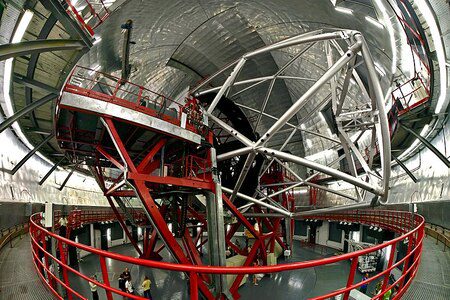Click here if you want to read this page in Spanish![]()
Kepler space telescope. On Friday March 6, 2009, NASA launched the “Kepler” telescope mounted on a Delta II rocket from Cape Canaveral.
Characteristic of the Kepler space telescope
After entering orbit about 185 kilometers from Earth, the System activated its engines again to launch the spacecraft that takes the telescope to another orbit, this time around the Sun.
The Kepler, which weighs more than a ton, has traveled an elliptical orbit around the Sun in 371 days.
This arrangement has been considered optimal for maintaining communications with the Earth.

The Kepler mission, which will last 3 1/2 years, is to search for planets similar to Earth.
During this time, the telescope has observed about 150,000 stars simultaneously and every 30 minutes, in the area of the constellations of Swan and Lyra, both in the Milky Way, in an area where there are stars of composition and age very similar to those of the Sun.

At a cost of almost 600 million dollars, it has been the protagonist of NASA’s first mission in the search for Earth-like planets that orbit around stars and that have a high possibility of harboring life.
The telescope will specifically look for relatively small planets that are neither too hot nor too cold, that are rocky, and that have water in a liquid state.
To find out if there are planets orbiting these stars, a 95 cm diameter photometer will measure the oscillations in the stars’ brightness.
It is about detecting in that light changes that are periodic and that would indicate that a planet passes in front of the star. (what is called transit).
The size of the planet and its distance from the star is deduced from how much brightness the planet takes away and for how long.
The light meter on this planet hunter has been designed to focus a wide field of view, with a 95 Megapixel lens.
It is the most powerful camera that has been put in space to this date.
NASA’s Kepler mission has confirmed in 2011, the first discovery of a new planet that is outside our Solar System and that orbits around a star similar to our Sun and that is to a distance of 600 light years from Earth.
Kepler’s planetary catalog will be very helpful in obtaining a reliable estimate of the total number of Earth-like planets in that area of the Milky Way.

News from January 14, 2012 revealed the discovering of 2 new planets in the Milky Way that rotate around 2 suns.
Found by the Kepler spacecraft thousands of light years from Earth, each of them rotates around a pair of Stars.




